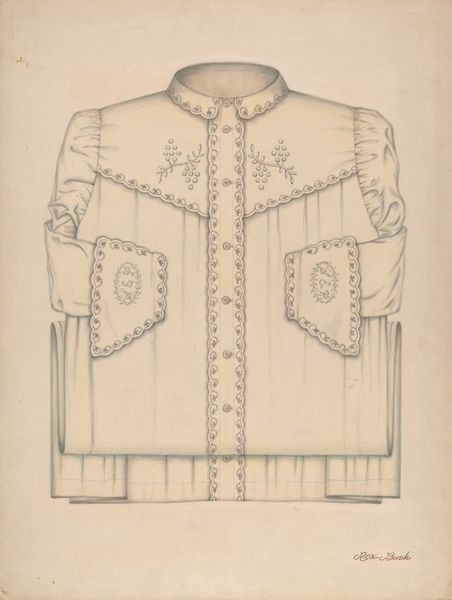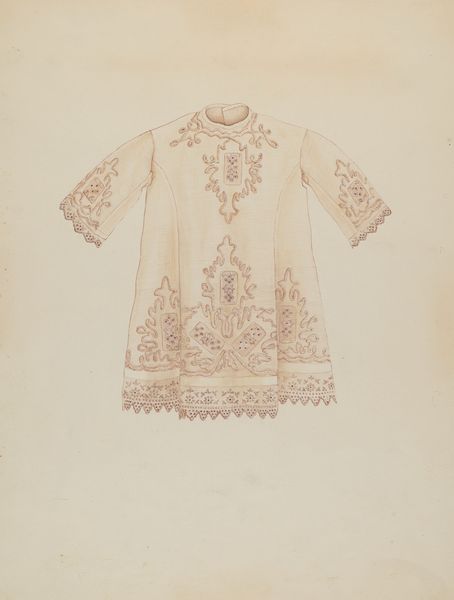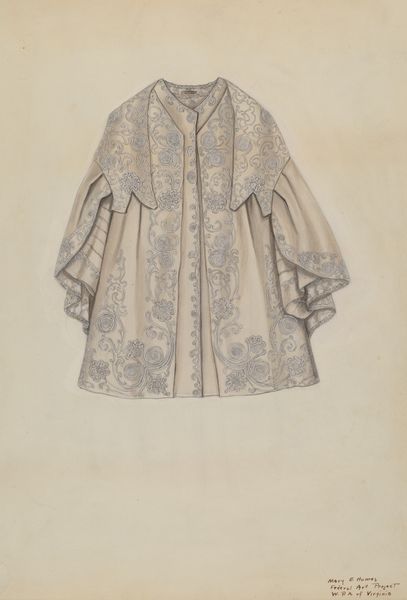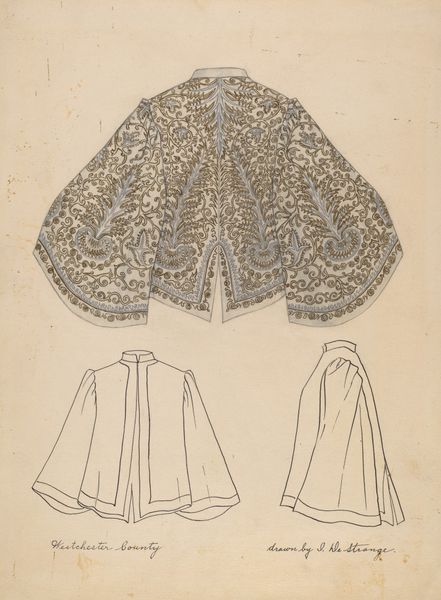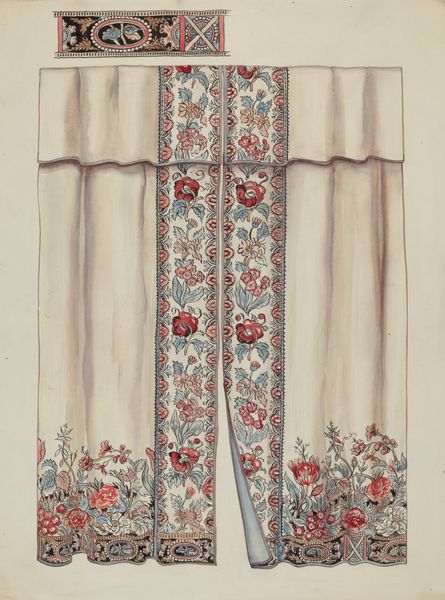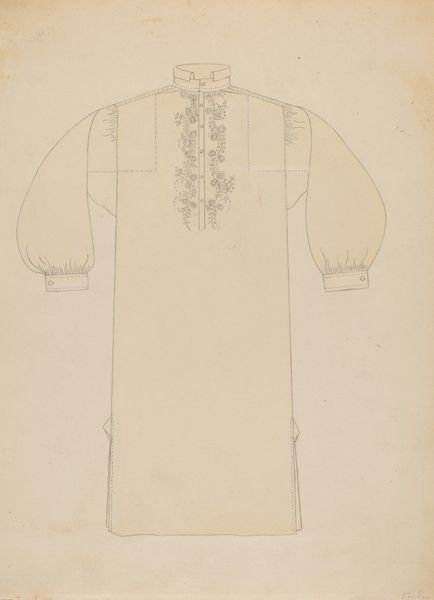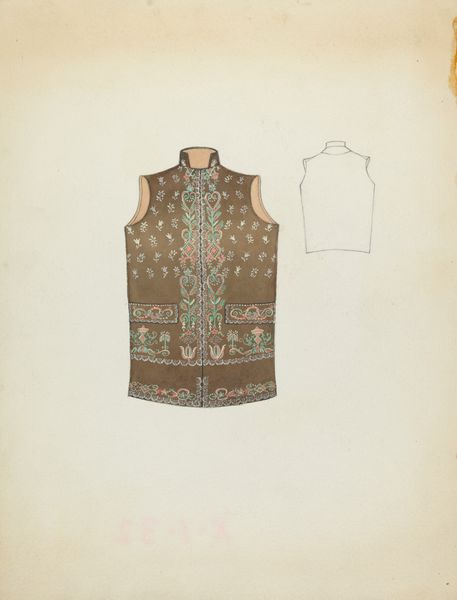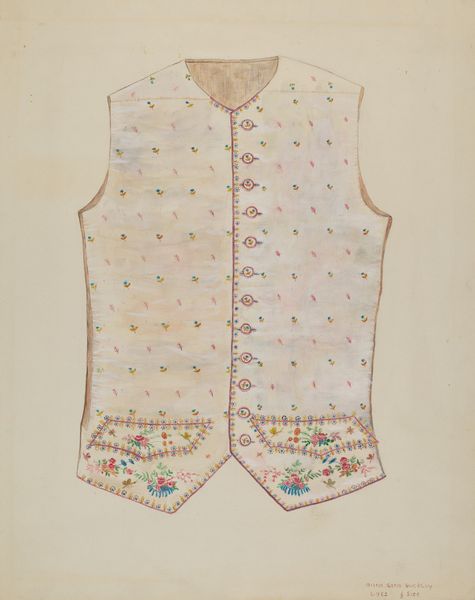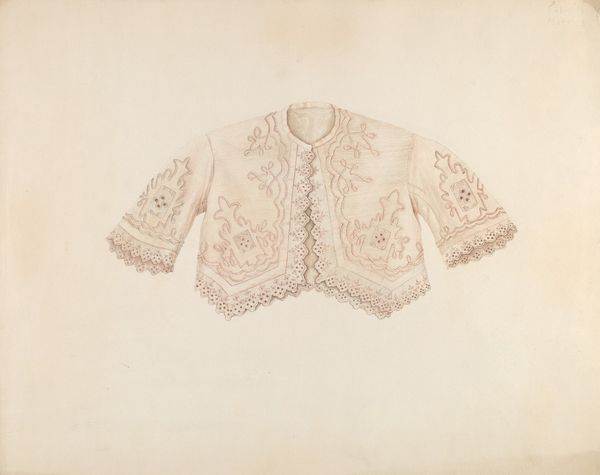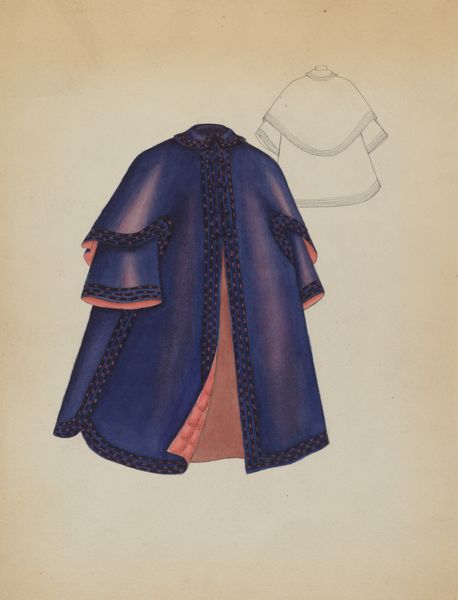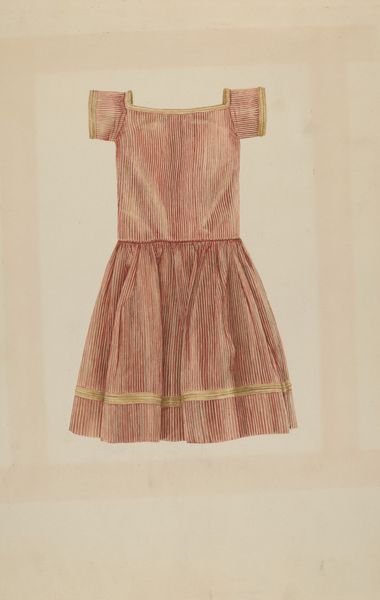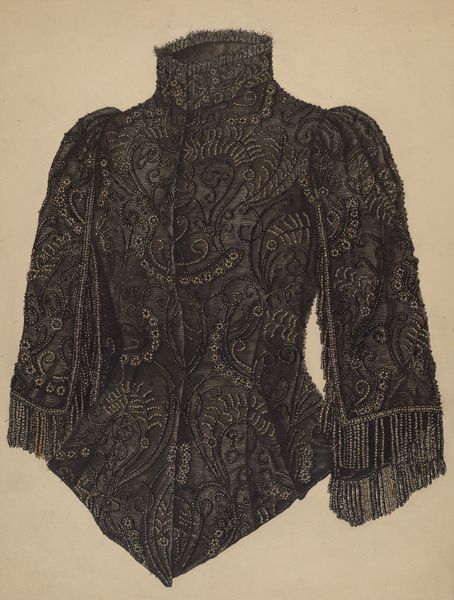
drawing, paper, pencil
#
portrait
#
pencil drawn
#
drawing
#
pencil sketch
#
paper
#
pencil
#
realism
Dimensions: overall: 51 x 38.2 cm (20 1/16 x 15 1/16 in.)
Copyright: National Gallery of Art: CC0 1.0
Curator: Welcome. We're looking at Eugene Croe's "Nightgown," a pencil drawing on paper from around 1938. Editor: It's such a delicate work. Almost ghostly, the way the light falls on the fabric. I wonder, is this object staged? Arranged to appear unused or somehow expectant? Curator: The choice of attire certainly suggests intimacy, but perhaps it's also speaking to a specific cultural moment. Think about the interwar period—the growing emphasis on personal comfort and the rise of consumer culture influencing even our private lives. Editor: I agree, I think the medium definitely enhances the subject matter; the pencil sketch itself mirrors the textures and folds of the fabric. Note the precision in rendering the embroidery. It speaks of considerable labor, of care. Were such elaborate nightgowns a sign of status in that period? Curator: Probably yes. Remember that fashion magazines and department stores played a huge role then. Croe, whose biography we only have hints about, was active in the circle of Harlem Renaissance. One might speculate if this work reflected an interest in promoting particular brands of leisure? Editor: It’s fascinating to consider that question and this intersection of class, material and identity. Thinking about the artistic labor; it is worth considering that Croe, working in pencil, carefully built layers of tone on smooth paper, so we see an item of personal use transformed by artistic choices. Curator: Precisely. We can also examine how it intersects with the visual codes around femininity at the time. Does the choice of rendering an empty nightgown speak to broader issues surrounding representation and the female body in the 1930s? Editor: Certainly, one could ask to what extent is absence made a charged and political element through such stark rendering. The fabric almost breathes, and it invites the spectator to complete the narrative by supplying body or soul. Curator: Definitely a stimulating avenue for analysis. Croe’s rendering leaves much open. Editor: Exactly, allowing it to be much more than an inert object study. It is the dialogue of light and shadow rendered skillfully which invites us to ponder how sleep and the materials in which we find comfort tell of labor, class and identity.
Comments
No comments
Be the first to comment and join the conversation on the ultimate creative platform.
